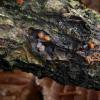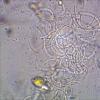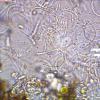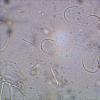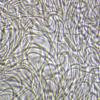
24-12-2025 17:08
Hulda Caroline HolteHello, I have found this propoloid ascomycete on

21-12-2025 09:32
Hello.A tiny ascomycete found embedded in wood in

21-12-2025 21:32
Pol DebaenstHello, Garden, Burgweg 19, Veurne, BelgiumOn 10/1

22-12-2025 23:38
Patrice TANCHAUDBonsoir, récolte sur un mur en pierre, apothéci

22-12-2025 00:47
Patrice TANCHAUDBonsoir, récolte à proximité du milieu dunaire

In the Eifel National Park I also found this anamorph - it looks like Libertella faginea to me, but it grew on Quercus. I do not find an Eutypella (Libertella)-species growing on Quercus. What do you say?
Best regards from Lothar
Did you check Phomopsis? I've noticed some samples might only have alpha-conidia's, so why not some with beta-conidia's only? It seems to me I see a single alpha-conidia.
Maybe put another conidiomata under the microscope, one never knows.
Proportions of alpha and beta conidia's are maybe dependant of climatic conditions of the period of sampling. It's the hypothesis I make after following some stations.
Cheers - LUC.

Hi Luc,
thank you very much for your proposal - and: you seem to be right.
Only today I found the time to put another piece of the fungus under the lens. First I (again) thought there would be only one sort of conidia - millions of the long, curved B-conidia.
But after some search I found few (only at about 5 or 6 places in my slide) other conidia that could perhaps be the A-conidia of the Phomopsis. They measure about 10/2 µm.
Phomopsis belongs to Diaporthe - then on Quercus to D. leiphaemia? What do you think?
Best regards from Lothar
